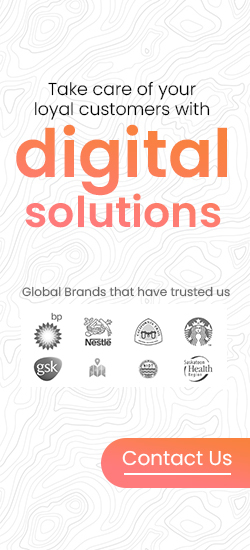Digital Transformation Is a Must, Not a Maybe

It is 2025, the era of digital transformation, where businesses are not just competing with each other but rather racing against the pace of digital evolution. In such a scenario survival is more than just embracing innovation, it is more about adaptability.
Digital Darwinism represents the urgency of the situation in full capacity. It is a term describing the phenomenon where evolution of technology is faster than the pace of organization’s adaptability. Though it was a theoretical term back in the 2000s, it has now become a reality.
Today, there is only one route to success: digital transformation!
What Happens When You Don’t Evolve
Falling behind isn’t a risk. It’s a proven outcome, etched in the stories of those who didn’t adapt. Global giants like Blockbuster, Kodak, BlackBerry didn’t just miss trends, they missed a fundamental shift in how the world operates.
And now in 2025, that shift is moving at the speed of light. AI, IoT, and blockchain technology is changing not just industries, but also changing expectations. The world wants it now, curated for them, and with no effort. Whether it is ordering dinner for them or managing their bank account, the ecosystem has a higher bar.
And here’s the thing: if you can’t meet that expectation, someone else will. The companies that will thrive now and in the future, aren’t just leveraging new technology, they are tactically capitalizing on it. They are listening, adapting, and moving at speed. The others? They are just getting left in the dust.
What It Really Takes to Transform
Simply put, a digital transformation is a re-imagining of business models, customer experiences, and internal processes using digital technologies. This is not just a question of implementing one tool or one platform, but a rejigging of how an entire organization creates value.
Digital transformation aligns closely with the concept of digital Darwinism, where only those businesses that can evolve at the speed of market expectations survive and thrive. However, companies often make the mistake of tackling change in isolated pockets, upgrading tech systems or digital processes one department at a time without a cohesive plan. This approach might seem practical at first, but it results in scattered projects, repeated work, and systems that don’t work together.
What happens then?
Data gets stuck; important insights end up trapped within single teams or platforms making them hard to reach, spread, or use across the whole organization. When data gets stuck, it slows down choices, leads to mixed messages, missed chances, and a choppy experience for customers.
For a business to change with the times, breaking these barriers is key. Real change needs a unified data plan that lets teams work together and gives quick insights across the entire company. To drive meaningful change, transformation must take place across three fundamental levels within the organization
-
Leadership & Strategy
Transformations start at the top. First, executives need to change their thinking from a stagnant, risk-averse leadership style to one of forward-looking, proactive, growth-focused leadership. In 2025, boards are made up of leaders who are not only tech-savvy but realize and embody agility as a competitive advantage.
Leaders need to develop and communicate an overt digital vision through the operating model of their long-term goals. This is not just an upgrade of IT systems but it must also include improvements in:
- Experience for the customer
- Process improvements
- Being ready for the future
Impact:
Companies whose leadership is digitally literate are more likely to be aligned on goals and strategies, budget priorities, and company-wide adoption. Organizations respond faster to adoption and changes to technology trends rather than lagging in reaction time.
-
Operations & Processes
Digital transformation in operations and process change denotes the streamlining of workflows to overcome and reduce silos (or fragmentation) with data-driven insight. In 2025, robotic process automation, artificial intelligence, and cloud-native architecture are contributing to smarter and faster business processes.
As an evolution, digital transformation involves interoperability of digital applications, tools, and data, within teams, for all the platforms in a company to work together. The most adaptable companies are reorganizing internal processes to be customer centric, agile and scalable.
Impact:
Companies that evolve their operations or processes reduce costs, increase speed to market and improve quality of product or service. They are also quick to pivot to change and live by the motto “change is the only constant”.
-
Culture & Talent
Digital transformation is not a “project” or a “program”; it relies on people to succeed. It is as much a cultural challenge as it is a technical one. Employees must be given permission to not just think digitally but also to experiment with new ideas and operate in a perpetual state of change.
Companies that will lead in 2025 are committing effort and resources to workforce planning, training and development, and creating agile teams. They are creating cultures that encourage innovation, allow for failure, and promote collaboration.
Impact:
A digitally mature culture creates less resistance to change and accelerates adoption. Companies with an adaptive culture are also better able to attract and retain digital-native employees, which is essential in a highly competitive talent market.
Transformation Must Be Ongoing
One common error that businesses make is thinking of digital transformation as a one-time event. It is not! The digital world moves quickly, and every month there are new tools, platforms, and expectations. What makes a company successful in 2026 will not be the same as it is in 2025.
Digital transformation requires a focus on constant reinvention, which means constantly being aware of your technology stack, user journeys, data flows, and to what extent you fit in the market. Companies should be committed to constant evolution and able to pivot on a dime or scale as necessary.
This means creating an organizational structure that allows for an agile approach; both in terms of mindset and actions,feedback loops, iterative development and rapid deployment should reach the roots of the organizations.
Emerging Technologies that will Define the Future
In the 2025 digital economy, a company’s survival is based not on its ability to adopt new technologies, but on how well new technologies are integrated to transform customer experiences and business models. The technologies are no longer optional, they are the core for strategic reinvention in the digital era.
Some key technologies driving the industries today include:
- Artificial Intelligence & Machine Learning: Automate, predict and hyper-personalize across customer journeys and operations.
- Edge Computing: Process data in real-time at the source, faster and more responsive services and scalable infrastructure.
- 5G Connectivity: Upgrade the digital experiences and connected ecosystems with minimal delays and high-speed data transmission.
- Extended Reality (XR): Integrate digital and physical environments seamlessly to redefine engagement, training and collaboration across industries.
- Blockchain: Build trust through secure and transparent transactions – essential for industries like finance, logistics and legal.
What the Future Holds
True prosperity in today’s digital age requires more than just change on the surface ; it requires transformation at every level. With accelerating change being driven by technology, every organization needs to move from being reactive to resilient. Digital Darwinism is not about the survival of the fittest, it’s about the survival of the fastest and most adaptive. Digital is not a strategy in 2025; it will be your lifeline.
Still Thinking Digital Is Optional? Think Again.
You are already late, don’t miss the flight by waiting more! Reach out to Way2Smile Solutions. We don’t help just for you to catch up, we help you leap forward. If your organization and workflows are stuck in yesterday, we’re here to redesign your tomorrow.
At W2S solutions, it is not about providing band-aid fixtures, it is about building future-ready ecosystems tailored to your goals. Tech that adapts, scales, and transforms at the speed your market demands.
Start your digital reinvention today with Way2Smile Solutions.


